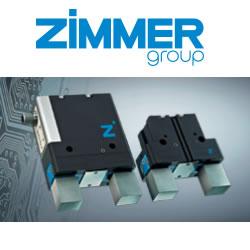KINGSTAR Version 3.4 Is Now Available – Here's What You Need to Know
We're excited to announce that the latest version of the KINGSTAR Machine Automation Platform is now available. Version 3.4 adds a variety of new functionality, like IO-Link master device support, as well as support for additional hardware and expanded documentation. It also resolves over 15 known issues. Read the release notes below for all the details, or get in touch to learn more about how KINGSTAR Version 3.4 can benefit your business.
General Availability Release Date April 6, 2018
KINGSTAR products are designed for industrial machines requiring motion control and positioning systems. KINGSTAR′s all-software approach sets it apart from other machine control solutions.
Using the EtherCAT standard; the power of Industrial PCs; and the Windows operating system, enhanced by IntervalZero′s RTX64 hard real-time software that transforms Windows into a real- time operating system (RTOS), you can create software-only, PC-based machine controllers that lower the costs of industrial machines while delivering excellent precision and performance.
There are two product lines: KINGSTAR Soft Motion and KINGSTAR EtherCAT.
KINGSTAR Soft Motion is a complete software solution that creates PC-based machine controllers with premium precision and performance.
KINGSTAR EtherCAT provides support for CANopen over EtherCAT and simplified configuration of EtherCAT networks.
Start a Trial Today
New Features and Resolved Issues
KINGSTAR Soft Motion
Integrates IO-Link master device support into KINGSTAR. [KS-343, KS-466]
Adds support for CANopen. [KS-582]
Adds support for Automatic Device Specification (ADS) over EtherCAT. [KS-639]
Allows manual setting of linked devices. [KS-674]
Improves I/O read and write protections to ensure data can be correctly read. [KS-733]
Supports RTX64 3.3 with Update2. [KS-739]
Supports INTEL Skylake i9 X Series systems.
Supports INTEL Xeon scalable processors.
Improves subsystem performance on systems that support Memory Bandwidth Allocation (MBA) by implementing a dedicated RTX64 bandwidth.
Improves subsystem performance on systems that support Cache Allocation Technology (CAT) by allocating RTX64 L3 cache from a non- system-wide shared cache.
Resolves an issue regarding group protections for an axis being incorrectly verified. Verification now happens in MC_GroupEnable instead of MC_AddAxisToGroup. [KS- 712]
Resolves an issue regarding buffers not being continuously updated in group mode. [KS- 707]
Resolves an issue regarding the status of an axis not being changed after it is removed from a group. [KS-709]
Resolves an issue regarding the wrong error returned when an axis group is enabled and an associated axis is already used in another group. [KS-711]
Resolves an issue regarding GetLinkStatus returning an incorrect error code for an invalid parameter. [KS-718]
Resolves a number of issues within the .NET API interface regarding functions being incorrectly linked to functions in underlying libraries. [KS-672, KS-673, KS-677]
Resolves an issue regarding the Win32 interface function SetSlaveEoeIp causing an abnormal application termination. [KS-680]
Resolves an issue regarding the Win32 interface function MC_WriteBoolParameter not supporting a parameter value of FALSE. [KS-704]
Resolves an issue regarding MC_ReadAxisError not always providing the correct error when a real axis is connected. [KS-684]
Resolves an issue regarding commands not being aborted when the emergency stop of a drive is triggered. [KS-686]
Resolves an issue regarding the mcKiStoppedOnly and mcKdUseInternalPos functions not correctly reading values. [KS-691]
Resolves an issue regarding the MotionProfileType being changeable while an axis is in motion. [KS-731]
Resolves an issue regarding calling halt or stop during a deceleration over shoots the target. [KS-741]
Resolves an issue regarding halt and stop not taking move directions into account, where halting or stopping a backward moving axis cause forward decelerating motion. [KS-751]
Resolves an issue regarding reading SDO not returning any data if the device data length exceeds the requested length. [KS-752]
Resolves an issue in the .NET Class Sample regarding the resetting of JogForward and JogBackward if the motion fails. [KS-715]
Resolves an issue in the .Net Api Interface Sample regarding the positive and negative moving directions being the same. [KS-716]
Adds support for new hardware:
EtherCAT I/O modules:
DECOWELL EC-HH00-C1NN [KS-720]
EtherCAT couplers:
Balluff BNI0077 IO-Link master [KS-700]
Beckhoff EL6224 IO-Link terminal [KS-697]
Beckhoff EL6751 CANopen master terminal [KS-474]
Beckhoff EL7041-1000 stepper motor terminal [KS-532]
Beckhoff EP6224 IO-Link master [KS-698]
Beckhoff EP6228 IO-Link master [KS-699]
Phoenix Contact AXL E EC IOL8 DI4 M12 6P IO-Link master [KS-701]
KINGSTAR EtherCAT
Integrated IO-Link master device support into KINGSTAR. [KS-343, KS-466]
Adds support for CANopen. [KS-582]
Adds support for Automatic Device Specification (ADS) over EtherCAT. [KS-639]
Allows manual setting of linked devices. [KS-674]
Adds supported for new hardware:
EtherCAT I/O modules:
DECOWELL EC-HH00-C1NN [KS-720]
EtherCAT couplers:
Balluff BNI0077 IO-Link master [KS-700]
Beckhoff EL6224 IO-Link terminal [KS-697]
Beckhoff EL6751 CANopen master terminal [KS-474]
Beckhoff EL7041-1000 stepper motor terminal [KS-532]
Beckhoff EP6224 IO-Link master [KS-698]
Beckhoff EP6228 IO-Link master [KS-699]
Phoenix Contact AXL E EC IOL8 DI4 M12 6P IO-Link master [KS-701]
Availability
KINGSTAR 3.4 Soft Motion and KINGSTAR EtherCAT are available beginning April 6, 2018 through Partners and by contacting KINGSTAR Sales or (781) 996-4481. Evaluation Downloads can also be requested here.
We look forward to comments and feedback. If you have any recommendations or wish to suggest any product enhancements, please contact Product Management.
Featured Product

Zimmer Group - THE PREMIUM GRIPPER NOW WITH IO-LINK
IO-Link is the first standardized IO technology worldwide for communication from the control system to the lowest level of automation.
